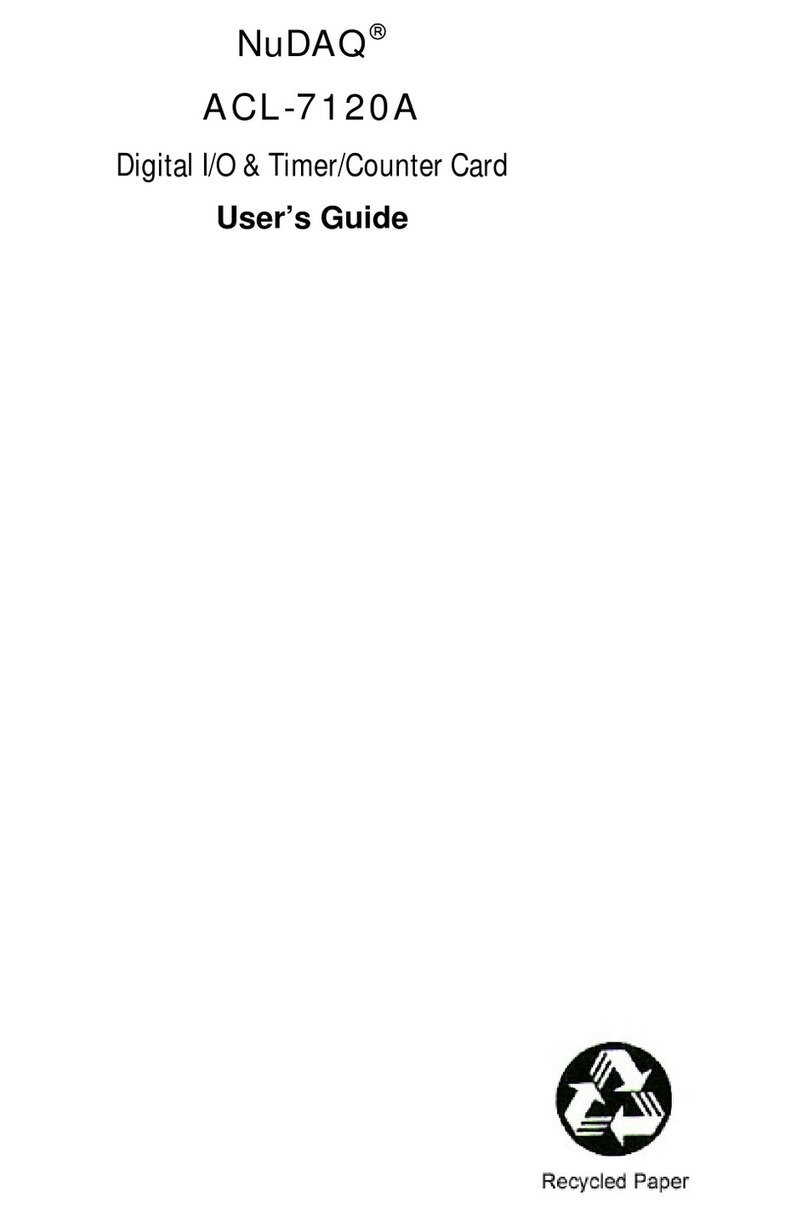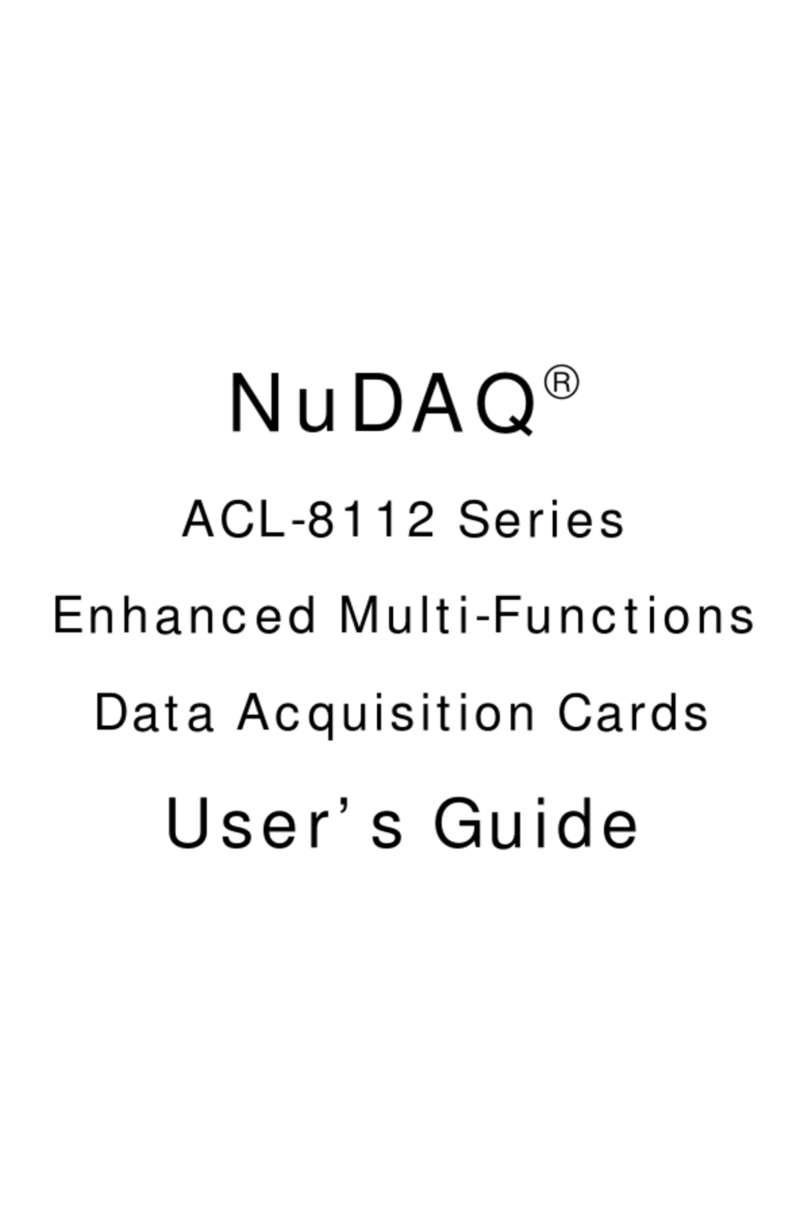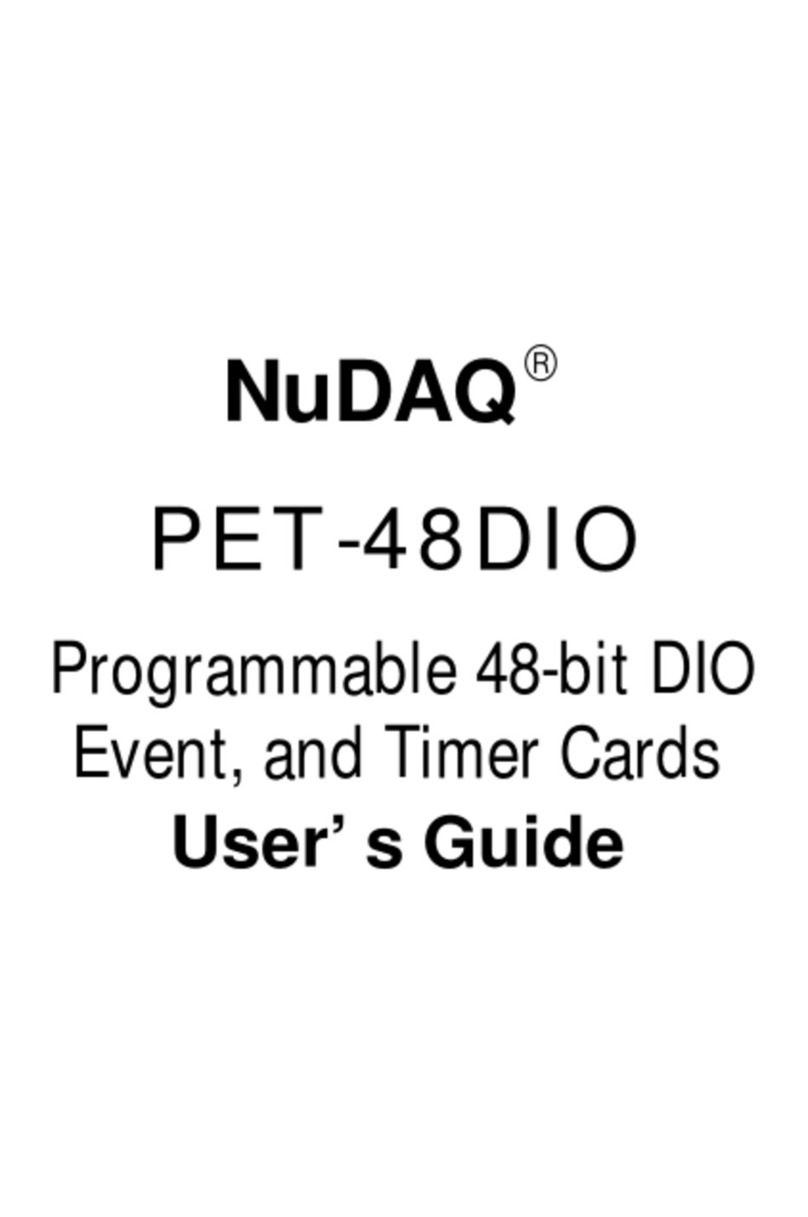ii •Table of Contents
Chapter 4 Operation Theorem ....................................... 26
4.1 A/D Conversion....................................................................26
4.1.1 A/D Conversion Procedure................................................27
4.1.2 A/D Clock Sources (Trigger Modes)..................................27
4.1.3 A/D Data Transfer Modes..................................................29
4.2 D/A Conversion....................................................................30
4.3 Digital Input and Output .......................................................32
Chapter 5 C/C++ Library for DOS .................................. 33
5.1 DOS Software Library Installation........................................34
5.1.1 Installation .........................................................................34
5.1.2 Running Utility ...................................................................34
5.1.3 Example Programs............................................................34
5.2 _8111_Initial.........................................................................35
5.3 _8111_Switch_Card_No ......................................................36
5.4 _8111_DI..............................................................................37
5.5 _8111_DI _Channel .............................................................38
5.6 _8111_DO............................................................................39
5.7 _8111_DA ............................................................................40
5.8 _8111_AD_Set_Channel .....................................................41
5.9 _8111_AD_Set_Gain ...........................................................42
5.10 _8111_AD_Set_Mode..........................................................43
5.11 _8111_AD_Soft_Trig ...........................................................44
5.12 _8111_AD_Aquire................................................................45
5.13 _8111_CLR_IRQ .................................................................46
5.14 _8111_AD_INT_Start...........................................................47
5.15 _8111_AD_INT_Status ........................................................48
5.16 _8111_AD_INT_Stop...........................................................48
5.17 _8111_AD_Timer.................................................................49
Chappter 6 Calibration ................................................... 50
6.1 What do you need................................................................50
6.2 VR Assignments...................................................................51
6.3 D/A Calibration.....................................................................51
6.4 A/D Calibration.....................................................................52
Appendix A. Demo. Programs....................................... 53
Warranty Policy .................... Error! Bookmark not defined.






























